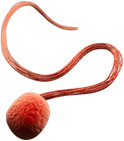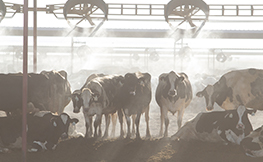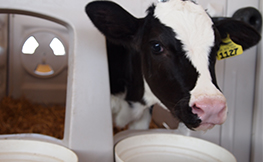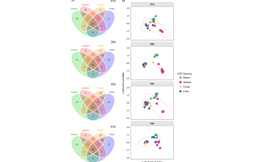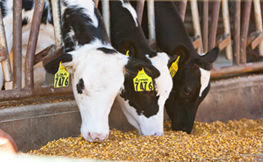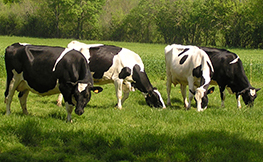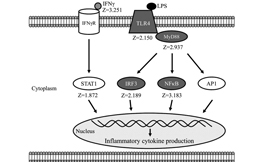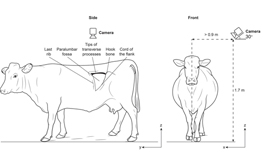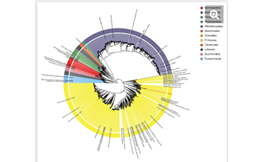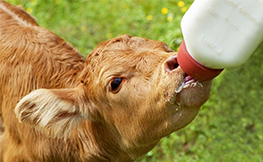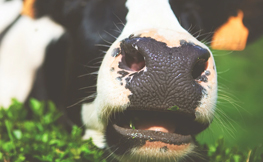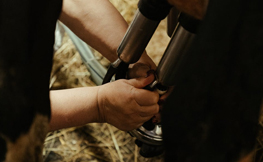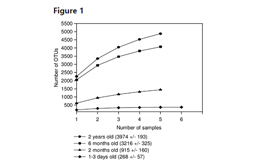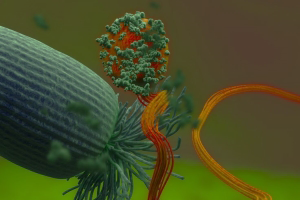
Rumen Health Technical Guide
Leading ruminant experts have written the Rumen Health Technical Guide. This resource is free to veterinarians, nutritionists and producers, request a copy today.
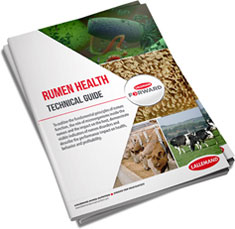 Get a copy
Get a copy
Rumen Microbiota
The rumen hosts a very diverse community called the microbiotaGlossaryView allMicrobiota
A microbiota is the whole of the ecosystem (bacteria, yeast, fungi and viruses) living in a specific environment. Intestinal microbiota was previously called “intestinal flora.” (Bacteria, Protozoa, Fungi) 2ReferenceView allChaucheyras-Durand F., Ossa F. 2014.
10ReferenceView allMcSweeney C.S., and Mackie R.I. 2012.
11ReferenceView allMorgavi D.P., Kelly W.J., Janssen P.H., and Atwood G.T. 2012.
.
Bacteria:
Rumen bacteria account for 1010 organism/mL of rumen fluid and several hundred species have been characterized to date. By volume, they comprise up to 50% of the total microbial biomass. Bacteria species are an important source of microbial protein, which supply the ruminant with 75-80% of its metabolizable proteinGlossaryView allMetabolizable protein
It is the total amount of amino acid and proteins absorbed in the small intestine, which result from rumen-undegradable proteins and microbial proteins. Metabolizable protein will be used by the animal in several metabolic processes, such as milk production, immune system function, reproduction and more.. Bacteria are also important for producing enzymes that digest fiber (celluloseGlossaryView allCellulose
The main carbohydrate contained in cell wall of plants. Cellulose is digested by ruminants thanks to enzyme produced by some cellulolyticGlossaryView allCellulolytic
Capacity to hydrolyze cellulose. bacteria., hemicelluloseGlossaryView allHemicellulose
The carbohydrate contained in the cell wall of plants. It is a polysaccharide less complex than cellulose and easily hydrolysable to monosaccharides thanks to hemicellulolytic enzyme.), starch and sugars.
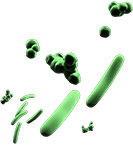
Protozoa:
Ciliate protozoa are organisms larger than bacteria and account for 106 organisms / mL of rumen fluid, however they still make up to 50% of the total microbial biomass. They have various activities:
- CellulolyticGlossaryView allCellulolytic
Capacity to hydrolyze cellulose. and hemicellulolyticGlossaryView allHemicellulolytic
Capacity to hydrolyze hemicelluloseGlossaryView allHemicellulose
The carbohydrate contained in the cell wall of plants. It is a polysaccharide less complex than cellulose and easily hydrolysable to monosaccharides thanks to hemicellulolytic enzyme.. can digest plant particles - Different protozoa have a positive role digesting starch (more slowly than bacteria)
- Others protozoa can consume lactic acid, thereby limiting the risk of acidosis
- Some types of protozoa are able to remove oxygen so they have a stabilizing effect upon anaerobiosisGlossaryView allAnaerobiosis
Life conditions without oxygen..
However, most of them degrade proteins very efficiently and release ammonia, so they can waste dietary protein. These proteins represent around 25% of the microbial protein available for the animal. Ciliate protozoa produce large amounts of hydrogen, which is a substrate for methanogens. The ciliate species are predators of other rumen microbes. In fact, a single protozoal cell can swallow up to several thousand bacteria in an hour so they play a very important role in rumen microbial population stability.
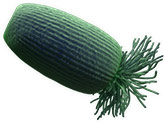
Fungi:
Rumen fungi comprise up to 8-10% of microbial biomass and are strictly anaerobicGlossaryView allAnaerobiosis
Life conditions without oxygen.. They play an essential role in fiber digestion due to the production of filamentous rhizoidsGlossaryView allRhizoids
Filamentous growth that permit the fixation of fungi on a substrate. which invade plant tissues, and their efficient enzymatic activities. This physical action to plant cell walls, can facilitate access to more digestible tissues and help release polysaccharidesGlossaryView allPolysaccharides
Succession of several sugars molecules., which are linked to ligninGlossaryView allLignin
Complex organic polymers in the cell wall of plants. Less easy to hydrolyse, lignin is digested by fungi thanks to their rhizoids. increasing the pool of digestible energy for the rumen microbiotaGlossaryView allMicrobiota
A microbiota is the whole of the ecosystem (bacteria, yeast, fungi and viruses) living in a specific environment. Intestinal microbiota was previously called “intestinal flora.”.
